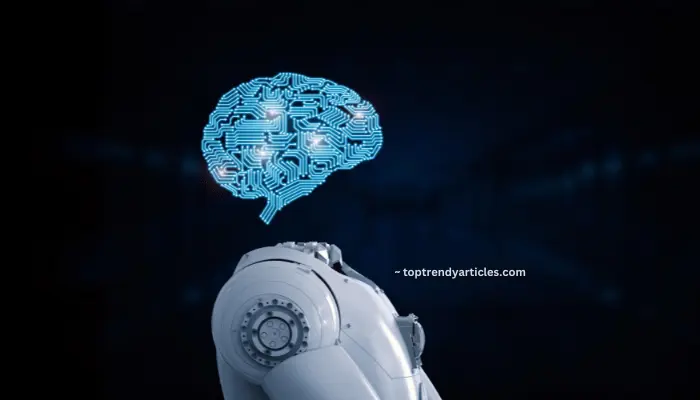Artificial intelligence (AI) has been a staple of science fiction for decades, contemplating the day it might rival human brains or possibly even exceed them. This vision of the future can be seen in humanoid robots such as C-3PO and R2-D2 from Star Wars, with AIs situated within a single robotic body that provides machines with capabilities at or above those found even among biological organisms. However, is that hypothetical scenario purely fantasy or one which could become reality?
AI’s Ability to Human-Level Intelligence
Tony Prescott, a professor of Cognitive Robotics and author of The Psychology of Artificial Intelligence, looks into this possibility by examining the links between neuroscience, robotics, and AI. Prescott maintains that AI systems need to be built similar to the human brain if we want them to achieve a more human-like intelligence. In his book, he speculates that the future of AI may involve multiple smaller systems connecting to form one much larger intelligence system which is perhaps even able to be embodied within a robot.
As Prescott noted, the design of AI is taking on more and more characteristics of how human brains are wired. Similar to how the human brain combines specialized functioning in areas (like vision, motor function, and language), an advanced AI system could consist of multiple overlapping systems focused on their own unique specializations. In this internetwork, the AI would learn, internalize, and evolve in a human-like way.

How AI Works Now: Narrow Intelligence
Currently, AI is turned out for specialized tasks. Generative AIs—those that create text, images, or video—are optimized for a specific domain. While large language models (LLMs) like ChatGPT are trained to produce grammatically coherent text from an extensive body of data, they do not know or comprehend the meaning behind any given string of words. While they do identify relationships between words and produce rational responses, such linguistic processes are not tantamount to real understanding or comprehension.
This is their limitation—they become deceptively good at one thing, but they lack an understanding of the world as a whole and cannot generalize from context to context. In contrast, human intelligence is flexible and adaptive and even cross-domain in its application; that’s a very big difference.
The Workflow: Using Combinatorial Intelligence from Multiple AIs
To address this disparity, Prescott suggests the notion of connecting together many general AIs to form a more intelligent structure overall. A specific instance could be combining an LLM with a vision AI that can generate art, allowing the system to comprehend what words and images mean much better. Such an integration may lead to a more holistic intelligence that goes beyond the limits of any one AI.
In order to achieve an intelligence level equivalent to or higher than humans, artificial intelligences need extensive knowledge of the world surrounding it and some kind of self-awareness. To do this, Prescott proposes placing several linked AIs into a humanoid-looking robot body to interact with its surroundings and learn from those experiences as well as the environment, much like humans would.
How Robotics Will Help Us Get Human-Like AI
The human-like AI begins with robotics. Prescott states that cognition is “not automatic (learning, while taking in information after which your brain manages and makes choices about the best way to organize it), recommending something over pure computation”. A body gives an AI a sense of its surroundings and the ability to respond, putting it on a path to experience-based understanding instead of only abstract processing.
AI would also learn to perceive, learn, and adapt much like how a human learned by harnessing cognitive architectures akin to that of the brain within robotic systems. This approach pushes past how far AI, as we know it, is capable of in regards to a limited range ability that does not touch the level of embodied cognition humans have.
Challenges Ahead and Future Opportunities
With recent breakthroughs in AI like deep learning and generative models, true human-level intelligence still seems far away. Prescott notes that human behaviours such as creativity and imagination are far from AI, for example, scientific discovery. Because these involve cognitive, as well as contextual and emotive understanding or innovation in inherently human ways.
The cognitive architectures required to construct AI systems that are at least as sophisticated as human intelligence might need to be parcelled out according to the specialization of neural functionality throughout disparate sensory modalities. That is, developing systems that can combine forms of intelligence; adapt based on experience and communicate meaningfully with the world. Robotics will be critical to this, bridging a physical body with tactile awareness and sensory perception.
Conclusion
The intriguing and bold inquiry: Can AI ever be as smart as humans? Although existing AI is very good at some things, it has no general intelligence nor adaptability similar to that seen in human behavior. But if we combine multiple AIs into one synthetic organism and embed them in robots, perhaps we could develop AI that thinks about the world as you do and reacts to it more like a human would.
With rapid advancements in AI technology, the prospect of machines mimicking human intelligence seems ever closer. Additionally, because we are on a path to understanding how both the human brain and principles of AI work in harmony at an unprecedented scale, this task will necessitate innovative mechanisms that fuse these domains together. Perhaps the future of AI is not just where cognitive science meets robotics and artificial intelligence, but it will be machines that think like us, or know what we feel when they do.
FAQs
Where we are with AI compared to human intelligence?
AI as we know it today is mainly task-focused, with great performance on limited parts of the intelligence spectrum and again far from human-like generalization ability.
Interesting now… How would AI have human level intelligence?
It is plausible that AI could attain the same level of human intelligence through a system that interconnects many specialized systems and mimics brain formation, as well as by manifesting these in robots.
What does embodiment have to do with achieving human-level intelligence in AI?
Embodiment is important since AI interacts with the physical world and uses that to respond in relation to its environment, allowing it to provide insight into context much like human cognition does.
Which problems can not be solved by AI up to human level?
Some of these challenges consist of replicating the numerous factors that human brain architecture possess, being able to have real comprehension and consciousness (not emotional intelligence) as well too maintain innovation with fluency in thought.
How Much Impact do Robotics Have in the Development of AI?
Robotics gives AI a physical body as well as sensory inputs that help it learn about the world around them and then use this knowledge to improve its ability to process other data.



